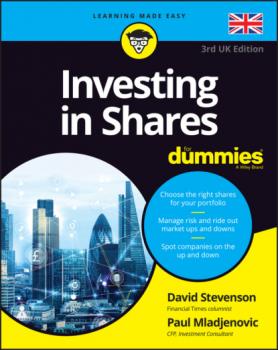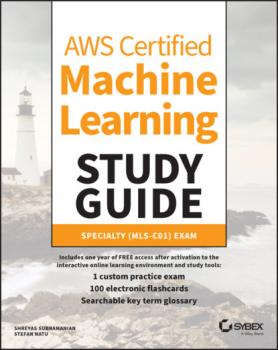John Wiley & Sons Limited
Все книги издательства John Wiley & Sons LimitedThe Way of the Wall Street Warrior
A Wall Street Insider's Guide to getting ahead in any highly competitive industry "Dave learned how to win in investment banking the hard way. Now he is able to share tools that make it easier for budding bankers and other professionals to succeed." —Frank Baxter, Former CEO of Jefferies and U.S. Ambassador to Uruguay "A must-read for anyone starting their career in Corporate America. Dave's book shares witty and valuable insights that would take a lifetime to learn otherwise. I highly recommend that anyone interested in advancing their career read this book." —Harry Nelis, Partner of Accel and former Goldman Sachs banker In The Way of the Wall Street Warrior , 25-year veteran investment banker and finance professional, Dave Liu, delivers a humorous and irreverent insider’s guide to thriving on Wall Street or Main Street. Liu offers hilarious and insightful advice on everything from landing an interview to self-promotion to getting paid. In this book, you’ll discover: How to get that job you always wanted Why career longevity and “success” comes from doing the least amount of work for the most pay How mastering cognitive biases and understanding human nature can help you win the rat race How to make people think you’re the smartest person in the room without actually being the smartest person in the room How to make sure you do everything in your power to get paid well (or at least not get screwed too badly) How to turn any weakness or liability into an asset to further your career
Nanotechnology-Enhanced Food Packaging
Nanotechnology-Enhanced Food Packaging Timely overview of functional food packaging made with nanotechnology and nanomaterials In Nanotechnology-Enhanced Food Packaging , a distinguished group of researchers delivers a comprehensive and insightful introduction to the application of nanomaterials in food packaging. This edited volume covers recent innovations—as well as future perspectives—in the industry and offers a complete overview of different types of nanomaterials used in food packaging. The book also discusses the use of nanoparticles in the development of active and functional food packaging and the related environmental and toxicological aspects. Featuring one-of-a-kind contributions from leaders in the field, Nanotechnology-Enhanced Food Packaging provides real-world solutions to food packaging challenges and considers the legislative and economic implications of new technologies. Among the new developments in nanotechnology-enhanced food packaging covered by the book are: Thorough introduction to biopolymers in food packaging systems and nanostructures based on starch, their preparation, processing, and applications in packaging Comprehensive explorations of chitosan-based nanoparticles and their applications in the food industry Practical discussions of active packaging systems based on metal oxide nanoparticles and an overview of higher barrier packaging using nano-additives In-depth examinations of the characterization techniques for nanostructures in food packaging Perfect for materials scientists, food technologists, and polymer chemists, Nanotechnology-Enhanced Food Packaging also belongs on the bookshelves of plastics technologists and allied professionals in the food industry.
Climate Impacts on Sustainable Natural Resource Management
CLIMATE IMPACTS ON SUSTAINABLE NATURAL RESOURCE MANAGEMENT Climate change has emerged as one of the predominant global concerns of the 21st century. Statistics show that the average surface temperature of the Earth has increased by about 1.18°C since the late 19th century and the sea levels are rising due to the melting of glaciers. Further rise in the global temperature will have dire consequences for the survival of humans on the planet Earth. There is a need to monitor climatic data and associated drivers of changes to develop sustainable planning. The anthropogenic activities that are linked to climate change need scientific evaluation and must be curtailed before it is too late. This book contributes significantly in the field of sustainable natural resource management linked to climate change. Up to date research findings from developing and developed countries like India, Indonesia, Japan, Malaysia, Sri Lanka and the USA have been presented through selected case studies covering different thematic areas. The book has been organised into six major themes of sustainable natural resource management, determinants of forest productivity, agriculture and climate change, water resource management and riverine health, climate change threat on natural resources, and linkages between natural resources and biotic-abiotic stressors to develop the concept and to present the findings in a way that is useful for a wide range of readers. While the range of applications and innovative techniques is constantly increasing, this book provides a summary of findings to provide the updated information. This book will be of interest to researchers and practitioners in the field of environmental sciences, remote sensing, geographical information system, meteorology, sociology and policy studies related to natural resource management and climate change.
Textbook for the Veterinary Assistant
Comprising 35 original essays written by leading scholars, this Companion constitutes an exceptionally broad-ranging and in-depth guide to one of America’s greatest poets. The volume makes the best and most up-to-date scholarly thinking on Walt Whitman available to students. It encourages them to be more aware of the contexts of Whitman’s work, and helps them to understand the experimental nature of his writings. The Companion starts with a section which communicates a strong sense of the poet’s time, place and history. The contributions in this section range over subjects such as national identity, imperialism, slavery, race, gender, sexuality, and popular culture. A further selection of essays situates Whitman’s work in its literary context. Finally, there are essays devoted to specific works, covering both Whitman’s poetry and prose writings. The Companion also includes a compact biography of the poet and a bibliography of his works.
Property Management Kit For Dummies
Before you put that FOR RENT sign in the yard, read this Hello there, future landlord. You’ve found what you’re looking for—a complete package of information and resources to teach you what you need to know and make your life (and your tenants’ lives) easier. With Property Management Kit For Dummies , you can learn how to manage single-family homes, large apartment buildings, treehouses, dollhouses… okay, there’s not much info here on managing dollhouses, but everything else is definitely covered. Find good tenants, move them in, and keep them happy and paying rent on time. When it comes time for a change, learn how to move tenants out and turn over the property, easy as pie. This book makes it simple to understand tax and insurance requirements, building maintenance concerns, and financial record keeping. Plus, the updated edition reflects the current rental property boom, new technologies, changes to the law, and the inside scoop on the latest Fair Housing issues to keep you out of court. Emotional support animals? Rent control? Bed bugs? Eviction? It’s all in here. Find out whether property management is right for you, learn what you need to get started, and be successful as your residential rental property portfolio grows Get your ducks in a row—develop solid marketing and advertising strategies and resources, build up-to-date rental contracts, figure out the legal side of things, and minimize your income and property tax bills Make sure you’re renting to responsible people, and deal with the occasional problem tenant without major drama Maximize your cash flow by keeping your rents at market prices, efficiently handling maintenance, and ensuring your property has great curb appeal with the features and benefits sought by today’s tenants Become a top-notch property manager with this one-and-done reference, plus online bonus materials.
Mediated Death
How do the dead live among us today? Approaching death from the perspective of media and communication studies, anthropology, and sociology, this book explains how the all-encompassing presence of mediated death profoundly transforms contemporary society. It explores rituals of mourning and the livestreaming of death in hybrid media, as well as contemporary media-driven practices of immortalization. Sumiala draws on examples ranging from the iconic deaths of Margaret Thatcher and David Bowie to those of ordinary people ritualized on Instagram, YouTube, Twitter and Facebook. In addition, this book examines digital mourning of global events including the Charlie Hebdo attacks, the Black Lives Matter movement, and the Coronavirus pandemic. Mediated Death is a must-read for scholars and students of communication studies, as well as general readers interested in exploring the meaning of mediated death in contemporary society.









